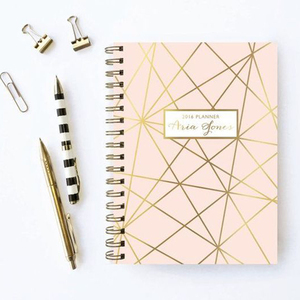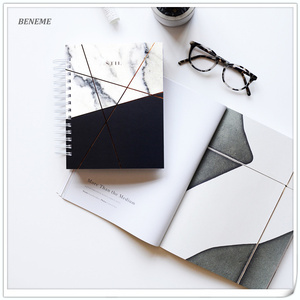(1580 products available)


















































































































































































































Japanese notebooks come in various types to accommodate different writing and drawing styles. These types also incorporate the unique features of Japanese design and practicality.
Bullet Notebooks
Bullet journals are popular Japanese notebooks for organizing schedules, tasks, and ideas. Their dotted grids, which are mostly small, give the users a level of freedom as they can create custom layouts without being restrictive. These notebooks are preferred for their flexibility, which allows combining planning with creative elements. That flexibility comes in handy for many users who want to mix planning with some creative elements.
Notebooks With Grid Patterns
Grid-patterned notebooks are highly preferred in Japan, especially among artists and designers. The precise grid layout ensures accurate drawings or diagrams, offering a solid foundation for visual works. The grids are often fine in Japanese notebooks, making them ideal for detailed artwork or technical drawings. Grids provide a balance between structure and creativity and are widely used for both illustration and drafting projects.
lined Notebooks
Lined notebooks are conventional but are still widely used in Japan for note-taking and writing. The line spacing in most of these notebooks is great for organizing text and ensuring legibility. Japanese lined notebooks also have unique configurations, like slant rules or margin spaces for making writing guides. These aids promote orderly writing, which is a trademark of Japanese calligraphy.
Sketchbooks
Japanese sketchbooks are ideal for artists, providing quality paper for quick sketches or detailed illustrations. The sketchbooks usually have plain or lightly gridded pages that support various media, including pencils, inks, and watercolors. A notable feature of some Japanese sketchbooks is the ability to tear pages off the book cleanly, which is ideal for sharing or portfolios.
Scientific Notebooks
Scientific Notebooks have special layouts intended for technical uses like engineering and mathematical problem tasks. These notebooks frequently incorporate graph paper, alignment, and other features suited to diagrams and formulae. In specific industries requiring accuracy, Printed Scientific Notebooks can be crucial for orderly data recording and analysis.
Japanese notebooks are renowned for their minimalist aesthetic, which often features simple but elegant covers and layouts. This restraint in design is deliberate, as it aims to reduce distractions and focus on the content. The use of thin yet durable paper, often multiple layers, is another key element that combines function with form. Many notebooks also include practical features like detachable pages, protective covers, and elastic closures. The overall design philosophy prioritizes usability, quality, and a calm, understated beauty.
Japanese notebooks are made from various materials to ensure quality, durability, and a superior writing experience. The paper used in Japanese notebooks is perhaps the most crucial aspect, with many featuring薄葉 (usuyou) or 'light paper,' which is famous for its sheer fineness and smooth surface. This paper, often crafted from木屑纖維 (mokusen sen'i) or wood pulp fibers), does not bleed even with heavy ink usage.
The covers of Japanese notebooks are also carefully considered, frequently constructed from厚紙 (atsushi) or thick paperboard for protecting the interior pages. This material choice also increases the overall lifespan of the notebook.
Some premium options use合成皮革 (gousei hiraku) or synthetic leather, giving the notebook a rich feel and extra protection. Many Japanese notebooks also feature精密ミシン (seimitsu mishin) or precision stitching along the spine, ensuring that the pages remain intact even with constant use.
Lastly, many Japanese notebooks are bound using寄せミシン (yose-mishin) or 'faux-witness' stitching, a technique that not only fortifies the binding but also adds an attractive, functional element to the design.
Choose By Paper Quality
The quality of the paper is among the most important factors. Many Japanese papers are very smooth, which makes them excellent for writing or drawing. Check what the paper is made of to avoid ink bleeding. The best choices are papers with high absorption to ensure no ink bleeds through.
Choose By Grid or Line Spacing
Japanese notebooks also have different types of page designs, like grids or lines. Some are dense, while others are wide apart. For people who write large, avoid notebooks with small grids or closely spaced lines. Likewise, if a user is doing detailed work, pick a notebook with fine grid paper or narrow lines.
Choose By Binding Types
There are different types of binding for Japanese notebooks, such as stitched, glued, and spiral. Each type of binding is unique in its own way. Those who want to fold the notebook flat should look for stitched or spiral-bound options. For many users, glued bindings in notebooks look great, but they cannot fold the notebook back flat.
Choose By Cover Types
Japanese notebooks also have covers, such as hard, soft, and jackets. A hard cover is ideal for anyone seeking stability while writing, especially when on the move. Soft covers are flexible and lightweight, making them portable. A cover with a file pocket is practical for users requiring safe storage for loose papers or notes.
Japanese Notebook Uses
Adjust choices based on personal preferences and intended use, whether for daily writing, sketching, or professional use. Review any special features, like page numbers or date fields, for organized note-taking, especially in journals or planners.
Japanese notebooks are very versatile and widely used.
For Daily Journaling
Many people in Japan write in journals daily and use their favorite notebooks for this. They include special areas for the date and weather and allow people to reflect on their day while organizing thoughts for the next day. People add drawings or use colorful pens to make the journals more attractive.
School Note-Taking
Japanese students are very careful when choosing notebooks. They pick ones with evenly spaced lines or grids to take neat and organized notes. After classes, some students draw illustrations to better understand the subjects they study.
Professional Planning
In business, workers prefer to plan tasks and schedules in physical notebooks instead of digital apps. They choose notebooks with special layouts for creating tasks and writing down ideas. Some Japanese planners have sections for important tasks, which help workers plan their day well.
Artistic Sketching
Japanese artists often use sketchbooks with thick paper to draw and paint. The smooth surface helps in making detailed artwork. Many artists like sketchbooks with pages they can pull out easily when they want to share their art or submit it for shows.
Creative Writing
Novelists and poets carefully select notebooks to capture their best ideas. They favor blank pages for freedom and flexibility while writing stories. Some choose notebooks with inspiring quotes on the covers to spark creativity.
A1: Japanese notebooks have special layouts and high-quality paper. They are great for writing, drawing, and organizing things. They are designed to make users more focused and creative.
A2: The small grids help people make neat drawings and diagrams. Artists and designers like them because they provide guidance for detailed work.
A3: Yes, Japanese notebooks are popular in business for planning and taking organized notes. Many have special layouts that help users boost their productivity.
A4: Some Japanese sketchbooks have tearable pages. They allow artists to share their work or keep their art organized in a well-studied portfolio.
A5: Japanese notebooks use thin but strong paper. It works well for fountain pens and doesn’t let the ink bleed. Many people choose them for writing thoughtful letters.